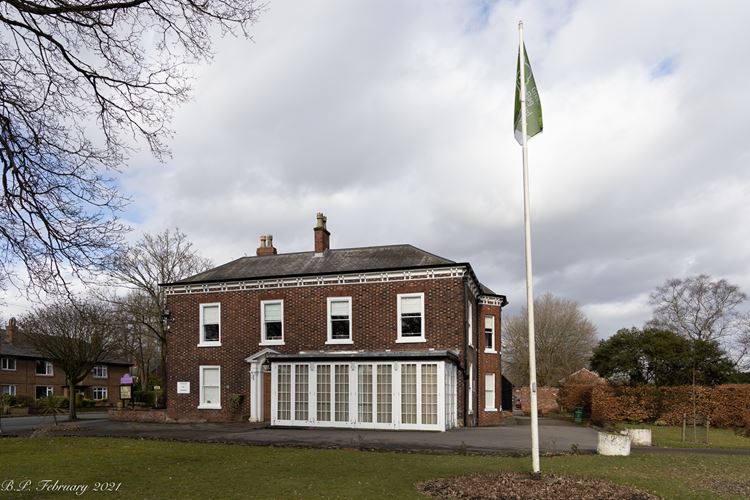Flixton House is a Grade II listed buildingStructure of particular architectural and/or historic interest deserving of special protection. in Flixton, Greater Manchester,[1] probably built by the local property magnate Ralph Wright in about 1806. The house and its grounds were acquired by the local council in the 1930s, when the “ugly” conservatory at the front was added;[2] it is now owned and managed by the Metropolitan Borough of Trafford. Following its refurbishment in 2018, the house has been used as a wedding and conference venue.[3]
Flixton House came to national prominence after its first owner, Ralph Wright, began blocking what had been public rights of way across his sixteen acres (6 ha) of land in 1824, having obtained permission from his fellow magistrates to do so.[4] His actions led to what has been called the Flixton Footpath Battle of 1826.[5]
Architecture
The two-storey house is built in Flemish bond brick with white headers, creating a overall chequered pattern.[1] The house has four bays and an offset front doorway with Doric columns. The brick-built outbuilding immediately behind the house and at right-angles to the rear, to which it is attached by a wall, was originally a barn. The kingpostStructural framework of timbers designed to bridge the space above a room and to provide support for a roof. roof is covered in slate.[1][2]
Rights of way
After Ralph Wright began blocking the public footpaths through his land in 1824, a neighbouring farmer, Samuel Wood, enlisted the help of other neighbours to clear the obstructions and reinstate the rights of way. A series of legal proceedings followed between 1824 and 1827; the Manchester Gazette supported the case against Wright, who its editor Archibald Prentice dubbed Vegetable Wright, and condemned the corrupt local dignitaries who supported Wright:[6]
The dispute led to the formation of the Manchester Footpath Preservation Society (MFPS) in 1826. That same year Wright’s blocking of a footpath still known as The Bottoms culminated in a court case which found the closure to be illegal. Wright accepted the court ruling, and the disputes over rights of way across his land came to an end.[5]


